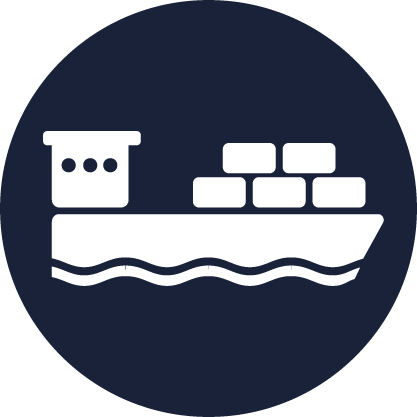Maritime • New initiatives in international maritime transport
Rapidly evolving over the past decade, international maritime transport contributes significantly to global anthropogenic greenhouse gas (GHG) emissions, exceeding those of the civil aviation sector.

2018
Guillaume Simonet • Consultant and independent researcher, Abstraction services
Introduction
Rapidly evolving over the past decade, international maritime transport contributes significantly to global anthropogenic greenhouse gas (GHG) emissions, exceeding those of the civil aviation sector. The establishment of the European Union MRV Regulation and the agreement adopted within the International Maritime Organization (IMO) can be a indicator of the beginning of a transition, provided that they lead to quantitative results. The past year has seen some interesting technological initiatives, driven by key industry stakeholders in the sector.
Contents
1 • GHG emissions concentrated on shipping routes
- A recent increase
- Emissions profile of the maritime sector
- GHG evolution correlated with vessel tonnage, size and speed
2 • The onset of awareness
- Actions of the IMO
- Regulatory tools in place
- An interesting recent agreement
3 • The momentum of shipping companies
- • Stakeholder partnership solutions
• The industry in Sweden leading the sector
• Support needed to stimulate the market
4 • Towards responsible maritime transport
- Electrification of the sector
- Other trending solutions
Conclusion
Actors in international merchant shipping have, with the new IMO resolution on the GHG emissions-reduction strategy, at least demonstrated their desire to meet the challenge posed by the GHG emissions caused by shipping. Given these innovations, particularly in the area of electricity, maritime companies and shipyards will, in the coming years, have at their disposal a wide range of technological options to modify the means of propulsion of their vessels. The IMO is an important coordinator on a global scale in ensuring the deployment of partnerships between state and non-state actors needed to achieve the ambitious objectives of an international maritime transport industry that is in step with the Paris Agreement. The increase in the size of vessels and their cruising speed are also challenges that must be part of the IMO’s new GHG reduction strategy if it is to achieve a successful energy transition for the international maritime sector, a sector that constantly faces major issues in international commerce; its strategic importance for major exporting countries, first and foremost China, makes defining a binding regulatory framework a complex task.



